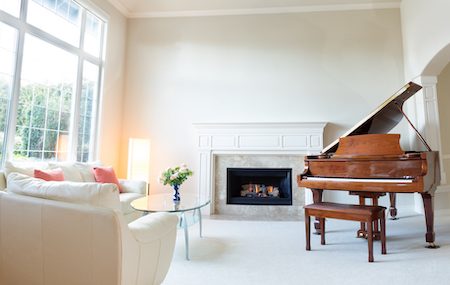Isn’t redecorating fun? It’s a great way to bring new life to an otherwise “boring” room.
For many homeowners, redecorating involves using existing furniture, moving it to a new location, and filling in with new decor to change how your room looks. While moving a chair or couch may be easy, moving an upright or grand piano around the house can be difficult at best.
Not only does placement of a piano impact the way your room functions, but it also has a considerable impact on the sound it produces. In some areas, projection will be more noticeable. In others, it might create a muffled sound.
The wrong placement can also damage the piano, and shorten its lifespan. Heat, air flow, sunlight – it can all cause extensive damage to the inner workings of the piano.
Grand pianos are difficult to move, and are often purchased with a specific place in mind. But uprights have more flexibility. They can be tucked into corners and moved based on space and needs. What should you keep in mind before you move it?
Most people place an upright near a wall because it looks best. It’s also one of the best places for it. That’s because a wall can help regulate the temperature, preventing extreme variances from impacting the inside structure.
Placing it near a wall also can improve the acoustics. But that doesn’t mean individual walls might not help or hinder the sound. If you desire to move your piano, you can try placing it along two separate walls. Play it in both spots – do you hear the differences? Some areas may soak up more of the sound, while others may create a more natural reverb. Testing can help you create the perfect sound to suit your tastes and needs.
There’s nothing wrong with moving your acoustic piano around a little. Just keep in mind that this is a sensitive instrument, and with every move, you risk impacting the sound. Regular maintenance, including tuning, should be performed to continue creating the perfect sound.


